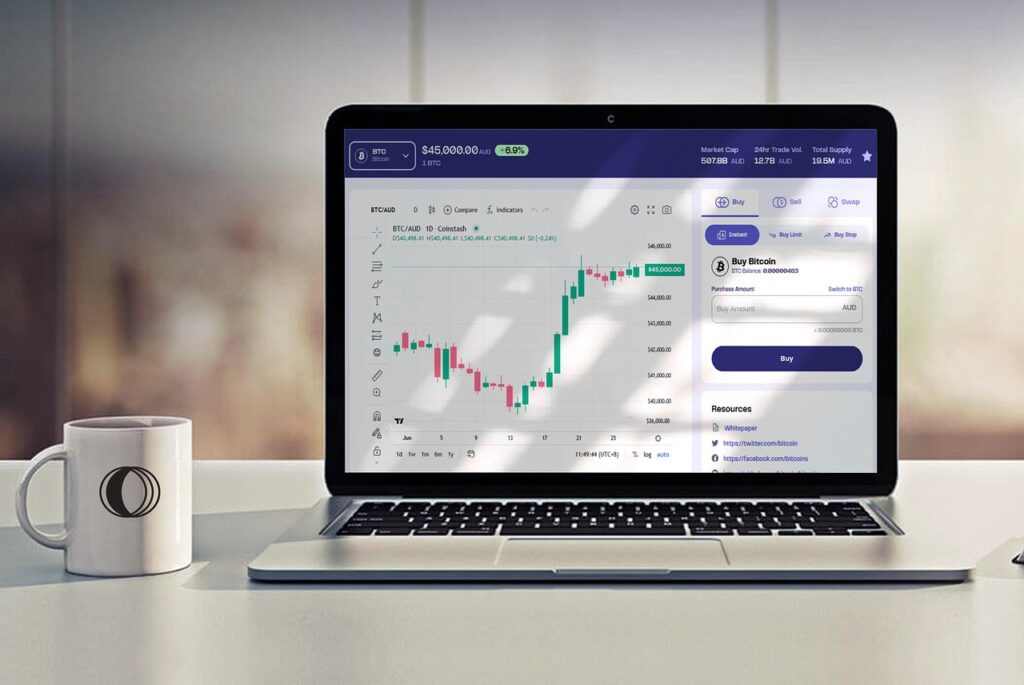stocks
Introduction
Looking for the Top 10 Best Stocks to Buy Now for Long-Term in 2025? You’re not alone. In a fast-changing market driven by AI, clean energy, and digital transformation, long-term investing has never been more important.
We’ve handpicked 10 high-potential stocks from tech giants to dividend growers that are built to perform in 2025 and beyond. Whether you’re aiming for growth, stability, or both, these companies can help you build lasting wealth.
1. Microsoft Corporation (MSFT)
Sector: Technology
Market Cap: Over $3 trillion (as of mid-2025)

Why Buy Microsoft in 2025 for Long-Term Growth
Microsoft remains one of the most dominant and diversified tech companies in the world. It is not just a software giant anymore it’s now a leader in cloud computing, artificial intelligence, cybersecurity, and gaming. Microsoft Azure, its cloud platform, continues to capture market share from AWS and is showing impressive year-over-year revenue growth.
Its partnership with OpenAI (creator of ChatGPT) positions it at the forefront of enterprise AI. Microsoft is embedding AI capabilities into its core products like Office 365 (Copilot), Teams, GitHub (Copilot for developers), and even Windows OS, offering productivity tools that millions of users depend on.
The company’s acquisition of Activision Blizzard gives it a powerful footprint in the gaming industry, further diversifying its revenue streams and expanding into the booming cloud gaming space.
Fundamentals & Financial Highlights
- Revenue Growth (5-Year CAGR): ~12%
- Free Cash Flow (TTM): Over $70 billion
- EPS (Earnings Per Share): Growing consistently
- P/E Ratio (2025): ~32x (slightly elevated but justified by growth)
- Debt-to-Equity: Low, indicating a strong balance sheet
Microsoft’s recurring revenue model, with more than $100 billion in annual cloud revenue, makes it a predictable and resilient investment, even during market volatility.
Dividend & Shareholder Value
- Dividend Yield: ~0.8%
- Dividend Growth: Raised dividends for 19+ consecutive years
- Share Buybacks: Aggressively repurchasing stock, boosting EPS
While the dividend yield isn’t high, Microsoft consistently grows its payout, making it an excellent dividend growth stock for long-term investors.
Long-Term Catalysts (2025 and Beyond)
- AI Integration: AI will become deeply embedded in all Microsoft products
- Cloud Dominance: Azure continues to grow faster than competitors
- Gaming Expansion: Activision acquisition unlocks new markets
- Enterprise Lock-In: Deep integration with global businesses (Windows, Office, Teams)
- Cybersecurity Growth: Microsoft Security is among the fastest-growing segments
Risks to Watch
- Regulatory scrutiny (especially around acquisitions)
- Slower enterprise IT spending in a downturn
- High valuation may lead to short-term volatility
Investor Takeaway
Microsoft offers a perfect blend of stability and innovation, making it one of the best long-term stocks to buy in 2025. With strong financials, growing cloud and AI adoption, and expanding product ecosystems, MSFT remains a core holding for any growth-focused or dividend-growth portfolio.
2 Nvidia Corporation (NVDA)
Sector: Semiconductors / Artificial Intelligence
Market Cap: Over $2.5 trillion (as of mid-2025)
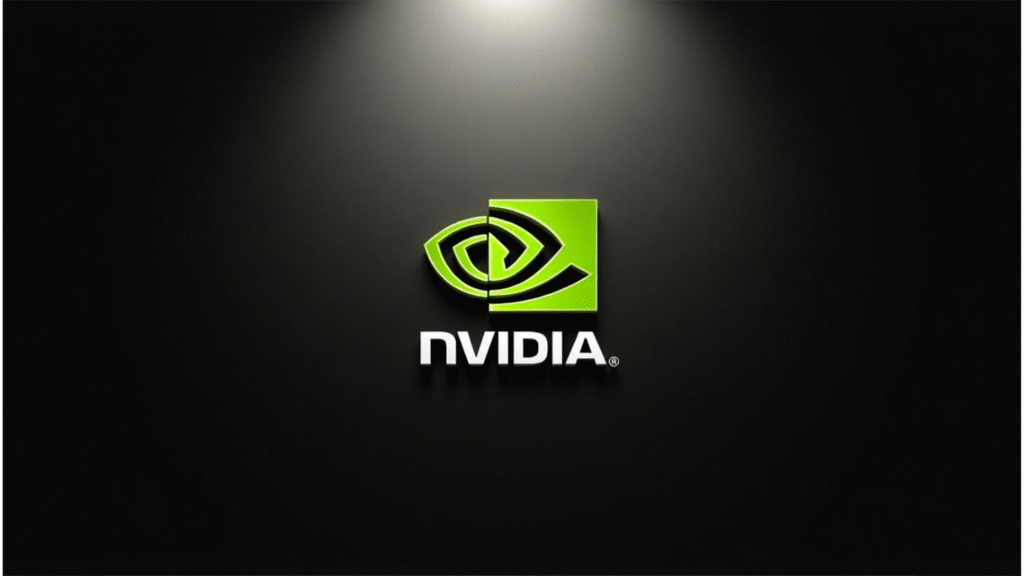
Why Buy Nvidia in 2025 for Long-Term Growth
Nvidia is the undisputed leader in the GPU (graphics processing unit) market and has become the backbone of the AI revolution. Its chips power everything from data centers and AI training models to autonomous vehicles, robotics, and gaming.
With the explosion of generative AI, Nvidia’s hardware especially its H100 and upcoming Blackwell chips has become a necessity for companies developing AI infrastructure. It’s the key supplier to industry giants like Microsoft, Google, Meta, and Amazon for training large language models and powering data center acceleration.
Beyond AI, Nvidia is making strong inroads into automotive AI, edge computing, cloud gaming, and software platforms like CUDA and Omniverse, expanding its reach well beyond hardware.
Fundamentals & Financial Highlights
- Revenue Growth (5-Year CAGR): Over 40%
- Free Cash Flow (TTM): ~$35 billion
- EPS (Earnings Per Share): Growing exponentially
- P/E Ratio (2025): ~55x (high, but reflects hyper-growth)
- Gross Margin: ~75%, among the highest in tech
Nvidia is a hyper-growth company, and its margins reflect its dominance and pricing power. Its R&D spending continues to rise, fueling innovation in AI, automotive, and next-gen chips.
Dividend & Shareholder Value
- Dividend Yield: ~0.03% (token dividend)
- Dividend Policy: Minimal, reinvests most profits into R&D and expansion
- Share Buybacks: Recently resumed in 2024 to reward shareholders
While Nvidia isn’t a dividend stock, its capital appreciation has outperformed almost every tech stock in the last five years. It’s built for growth investors, not income seekers.
Long-Term Catalysts (2025 and Beyond)
- AI Infrastructure Demand: Dominates AI data center hardware globally
- Autonomous Vehicles: Nvidia Drive powers many self-driving platforms
- Robotics and Edge AI: Expanding use in industrial automation
- Software Ecosystem: CUDA, Omniverse, and enterprise AI toolkits
- Custom AI Chips: Opening new markets beyond traditional GPUs
Risks to Watch
- High valuation could lead to volatility
- Growing competition from AMD, Intel, and custom chips (like Google TPU)
- Supply chain dependency, especially on TSMC for chip fabrication
- Government export restrictions (especially China-related)
Investor Takeaway
Nvidia is not just a chip company it’s the engine of the AI economy. With its dominant market share, strong software ecosystem, and unmatched innovation cycle, NVDA is a top-tier long-term stock in 2025. While volatility is expected due to high valuation, its long-term upside remains enormous for growth-focused investors.
3 Alphabet Inc. (GOOGL)
Sector: Technology / Communication Services
Market Cap: Over $2 trillion (as of mid-2025)

Why Buy Alphabet in 2025 for Long-Term Growth
Alphabet, the parent company of Google, continues to be one of the most dominant and diversified tech giants in the world. It generates steady, high-margin income from its core businesses Search, YouTube, and Google Ads which together capture a massive share of the global digital advertising market.
Alphabet is also rapidly expanding into cloud computing through Google Cloud Platform (GCP), the third-largest player behind AWS and Azure. GCP’s growth, combined with Alphabet’s AI-first approach, positions the company at the forefront of digital transformation.
Additionally, Alphabet is investing heavily in artificial intelligence, quantum computing, autonomous vehicles (Waymo), wearables (Fitbit), and healthcare (Verily) all of which offer massive optionality for future growth.
Fundamentals & Financial Highlights
- Revenue Growth (5-Year CAGR): ~15%
- Free Cash Flow (TTM): ~$75 billion
- EPS (Earnings Per Share): Growing steadily
- P/E Ratio (2025): ~26x
- Cash Reserves: Over $120 billion, very low debt
Alphabet’s fortress balance sheet, exceptional cash flow, and consistent advertising revenue make it one of the most reliable long-term holdings in tech.
Dividend & Shareholder Value
- Dividend Yield: 0% (does not pay dividends)
- Capital Allocation: Reinvests earnings into innovation and moonshots
- Share Buybacks: Aggressively buying back shares ($70B+ authorized in 2024)
While Alphabet doesn’t pay a dividend, it returns value through buybacks and invests in cutting-edge R&D, aiming for breakthroughs in AI, health tech, and cloud services.
Long-Term Catalysts (2025 and Beyond)
- AI Expansion: Gemini, Google Assistant, and Bard integrated across products
- Cloud Growth: Google Cloud is narrowing the gap with AWS and Azure
- YouTube Monetization: Shorts, TV, and premium services boosting ad revenue
- Waymo: A leader in autonomous vehicle technology
- Quantum Computing: Pioneering long-term computing breakthroughs
Risks to Watch
- Increasing regulatory pressure in U.S. and Europe
- Slowing digital ad growth in a recessionary environment
- AI competition from Microsoft, Meta, and OpenAI
- Monetization challenges in newer moonshot projects
Investor Takeaway
Alphabet remains one of the most undervalued and high-potential stocks in big tech. With multiple growth engines in AI, cloud, and autonomous tech, alongside its dominant ad platforms, it offers both stability and upside for long-term investors. For those who prioritize innovation, scalability, and a rock-solid balance sheet, GOOGL is a top stock to own in 2025 and beyond.
4 Amazon.com Inc. (AMZN)
Sector: Consumer Discretionary / E-commerce / Cloud
Market Cap: Over $2 trillion (as of mid-2025)
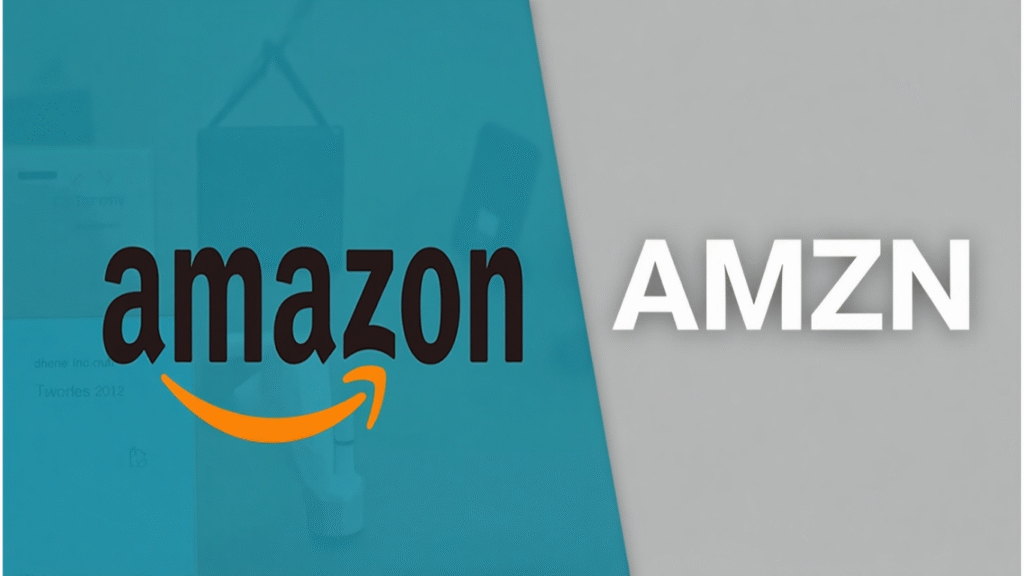
Why Buy Amazon in 2025 for Long-Term Growth
Amazon is far more than just an online retailer. It’s a tech-powered conglomerate with dominant positions in e-commerce, cloud infrastructure (AWS), digital advertising, AI services, and logistics. As the largest cloud provider in the world, Amazon Web Services (AWS) generates the bulk of the company’s profits and continues to grow at a double-digit pace.
Recent focus on cost optimization, including automation in warehouses and tighter operational controls, has led to expanding profit margins, especially in its North American retail business. Meanwhile, Amazon’s advertising division has become a serious revenue engine, surpassing $50 billion in 2024.
With ongoing investments in AI infrastructure, voice assistants (Alexa), Prime Video content, and last-mile delivery, Amazon is positioning itself to dominate several trillion-dollar markets.
Fundamentals & Financial Highlights
- Revenue Growth (5-Year CAGR): ~13%
- Free Cash Flow (TTM): ~$35 billion
- EPS (Earnings Per Share): Returning to strong growth post-investment cycle
- P/E Ratio (2025): ~42x
- Operating Margin (2025): Trending higher as retail and AWS efficiencies improve
Amazon’s diversified business model makes it resilient. With AWS and ads growing faster than retail, its profit mix is becoming more favorable to shareholders.
Dividend & Shareholder Value
- Dividend Yield: 0% (no dividend)
- Capital Allocation: Reinvests heavily into innovation and logistics
- Share Buybacks: Minimal, prefers reinvestment
Amazon doesn’t pay a dividend and likely won’t for years. Instead, it focuses on aggressive reinvestment to expand its ecosystem and long-term competitive edge—ideal for growth investors.
Long-Term Catalysts (2025 and Beyond)
- AWS Expansion: High-margin growth in cloud infrastructure
- AI Tools: Developing custom AI chips (Trainium, Inferentia) and services
- Logistics Domination: Rivals FedEx and UPS with its own delivery network
- Advertising Growth: Becoming a major digital ads player
- Global Retail: Expanding footprint in India, Latin America, and the Middle East
Risks to Watch
- Regulatory scrutiny (antitrust, labor, privacy)
- Rising operational costs and wage inflation
- Slower e-commerce growth in mature markets
- Heavy capital expenditure may pressure short-term earnings
Investor Takeaway
Amazon remains one of the most compelling long-term investments in the tech space. Its ability to dominate multiple industries—from cloud computing and AI to digital ads and logistics—makes it a diversified growth engine. While short-term volatility may arise from regulatory risks or capex cycles, Amazon’s structural advantages and visionary leadership make it a top stock to hold through 2025 and well into the 2030s.
5. Berkshire Hathaway Inc. (BRK.B)
Sector: Conglomerate / Financials
Market Cap: Over $900 billion (as of mid-2025)

Why Buy Berkshire Hathaway in 2025 for Long-Term Growth
Berkshire Hathaway, led by legendary investor Warren Buffett, is one of the most respected and stable long-term investment vehicles in the market. It operates as a diversified holding company, owning a collection of fully owned businesses and public stock holdings across various industries including insurance, energy, railroads, utilities, manufacturing, and consumer goods.
The company’s insurance operations (GEICO, Berkshire Re, Gen Re) generate float that is used to fund long-term investments. Its portfolio of publicly traded companies includes large stakes in Apple, Bank of America, Coca-Cola, and American Express many of which have strong dividend yields and consistent earnings.
With over $150 billion in cash and short-term investments, Berkshire has one of the strongest balance sheets in the market, giving it flexibility to deploy capital during market downturns. It’s a defensive powerhouse with a proven record of compounding shareholder value through smart acquisitions and disciplined investing.
Fundamentals & Financial Highlights
- Revenue Growth (5-Year CAGR): ~8%
- Free Cash Flow (TTM): ~$45 billion
- Book Value Growth: Steady growth over decades
- P/B Ratio (2025): ~1.5x
- Debt Levels: Extremely low, strong financial health
Berkshire’s financial conservatism and decentralized business model provide long-term durability, even during recessions or market turbulence.
Dividend & Shareholder Value
- Dividend Yield: 0% (does not pay a dividend)
- Capital Allocation: Focused on long-term investments, not quarterly payouts
- Share Buybacks: Actively repurchasing stock when undervalued
Instead of paying dividends, Berkshire rewards shareholders through share buybacks particularly when its stock trades below intrinsic value. This enhances per-share value over time.
Long-Term Catalysts (2025 and Beyond)
- Leadership Continuity: Post-Buffett transition plan already in place
- Insurance Growth: Strong float and underwriting profitability
- Cash Reserves: Ready to deploy during corrections or crises
- Acquisition Strategy: Focus on quality, cash-generating businesses
- Public Equity Portfolio: Anchored by long-term winners like Apple and Coca-Cola
Risks to Watch
- Succession Planning: Although a plan exists, Buffett’s departure could trigger short-term sentiment shifts
- Slower Growth: More of a wealth preservation vehicle than a rapid growth stock
- Concentration Risk: Heavily weighted in financials and a few tech names
Investor Takeaway
Berkshire Hathaway is a top-tier long-term stock for conservative investors seeking steady compounding, financial strength, and downside protection. It’s not flashy, but its value stability, shareholder-friendly approach, and long-term investing philosophy make it a bedrock holding in any portfolio aimed at long-term wealth creation.
6. Eli Lilly & Co. (LLY)
Sector: Healthcare / Pharmaceuticals
Market Cap: Over $800 billion (as of mid-2025)

Why Buy Eli Lilly in 2025 for Long-Term Growth
Eli Lilly is emerging as one of the most dominant pharmaceutical companies of the decade, thanks to its blockbuster drugs in diabetes, obesity, and neurology. Its flagship products, Mounjaro (for Type 2 diabetes) and Zepbound (for obesity), have delivered explosive revenue growth, with demand outstripping supply in many global markets.
In addition to current success, Eli Lilly boasts a highly promising drug pipeline, including potential treatments for Alzheimer’s, cancer, and autoimmune diseases. With strong pricing power, global scale, and robust R&D, Lilly is exceptionally positioned to benefit from global health trends, especially as populations age.
The company has also been investing in biotechnology, gene therapy, and digital health, adding multiple layers of future growth opportunities.
Fundamentals & Financial Highlights
- Revenue Growth (5-Year CAGR): ~14%
- Free Cash Flow (TTM): ~$10 billion
- EPS (Earnings Per Share): Accelerating due to product demand
- P/E Ratio (2025): ~55x (high, reflecting growth premium)
- R&D Spending: Aggressively investing in future therapies
Lilly’s business model is driven by innovation and lifecycle management. It consistently delivers above-industry growth thanks to its focus on high-demand, high-margin drugs.
Dividend & Shareholder Value
- Dividend Yield: ~0.7%
- Dividend Growth: Raised annually for over 10 years
- Share Buybacks: Moderate, as capital is mostly directed toward R&D
While not a high-yield stock, Eli Lilly is a dividend growth company, making it attractive for long-term investors who value both capital appreciation and rising income.
Long-Term Catalysts (2025 and Beyond)
- Obesity Drug Market: Zepbound sales expected to surpass $20B annually
- Alzheimer’s Treatments: Potential game-changing therapies in late-stage trials
- Aging Global Population: Expanding demand for chronic disease medications
- Pipeline Innovation: Dozens of drugs in Phase 2 and 3 trials
- Global Expansion: Increased access and penetration in emerging markets
Risks to Watch
- Patent Expirations: Could impact margins if generics enter market
- Pricing Pressure: Political scrutiny over U.S. drug prices
- Regulatory Delays: Any FDA approval delays could slow growth
- High Valuation: May lead to short-term volatility despite strong outlook
Investor Takeaway
Eli Lilly is one of the best long-term healthcare stocks to buy in 2025. With groundbreaking drugs in high-demand categories and a pipeline loaded with future blockbusters, LLY combines innovation, stability, and compounding potential. For investors seeking long-term exposure to healthcare trends and biotech breakthroughs, Eli Lilly is a top-tier pick.
7. Tesla Inc. (TSLA)
Sector: Automotive / Clean Energy / AI
Market Cap: Over $950 billion (as of mid-2025)

Why Buy Tesla in 2025 for Long-Term Growth
Tesla continues to redefine the automotive and energy industries with its leadership in electric vehicles (EVs), battery technology, AI, and clean energy solutions. The company remains the world’s leading EV manufacturer, with high-margin models like the Model Y and Cybertruck gaining traction globally.
Tesla is not just a car company it’s a technology and energy platform. Its growing energy storage business (Megapack, Powerwall) and solar division are contributing more meaningfully to revenue. Meanwhile, its investments in Autopilot (FSD) and custom AI chips have positioned Tesla as a potential future leader in robotics and autonomous driving.
Elon Musk’s bold vision and execution across industries from AI to space to battery innovation make Tesla a unique long-term bet for investors seeking disruption and exponential potential.
Fundamentals & Financial Highlights
- Revenue Growth (5-Year CAGR): ~28%
- Free Cash Flow (TTM): ~$10 billion
- EPS (Earnings Per Share): Highly volatile but trending upward
- P/E Ratio (2025): ~65x (premium reflects innovation potential)
- Gross Margin (EVs): ~18–20% (industry-leading despite price cuts)
Tesla operates with one of the most vertically integrated supply chains in the automotive sector, giving it cost advantages and speed in scaling new technologies.
Dividend & Shareholder Value
- Dividend Yield: 0% (no dividend)
- Capital Allocation: Reinvests heavily into R&D and global expansion
- Share Buybacks: Not a priority; growth is the focus
Tesla does not pay a dividend and prioritizes reinvestment into R&D, gigafactories, AI, and robotics. This aligns well with growth-focused, tech-savvy investors.
Long-Term Catalysts (2025 and Beyond)
- Full Self-Driving (FSD): Advanced driver-assist tech being refined and monetized
- Energy Storage: Growing demand from utilities and grid operators
- Dojo AI Supercomputer: Designed for AI training and self-driving capabilities
- Robotaxi Network: Expected rollout in testing markets
- International Expansion: Growth in India, Southeast Asia, and Latin America
Risks to Watch
- Execution Risk: Delays or failures in delivering on ambitious goals
- Regulatory Uncertainty: Especially around FSD and safety compliance
- Competition: Rising from legacy automakers and Chinese EV manufacturers
- Volatility: High valuation means wide price swings are common
Investor Takeaway
Tesla is a high-risk, high-reward stock that sits at the intersection of EVs, AI, energy, and automation. Its innovative edge and vision for the future give it massive long-term upside, especially for investors who believe in the electrification and autonomy megatrends. While volatility is part of the ride, Tesla remains a top long-term growth stock in 2025 for bold investors.
8. JPMorgan Chase & Co. (JPM)
Sector: Financials / Banking
Market Cap: Over $600 billion (as of mid-2025)
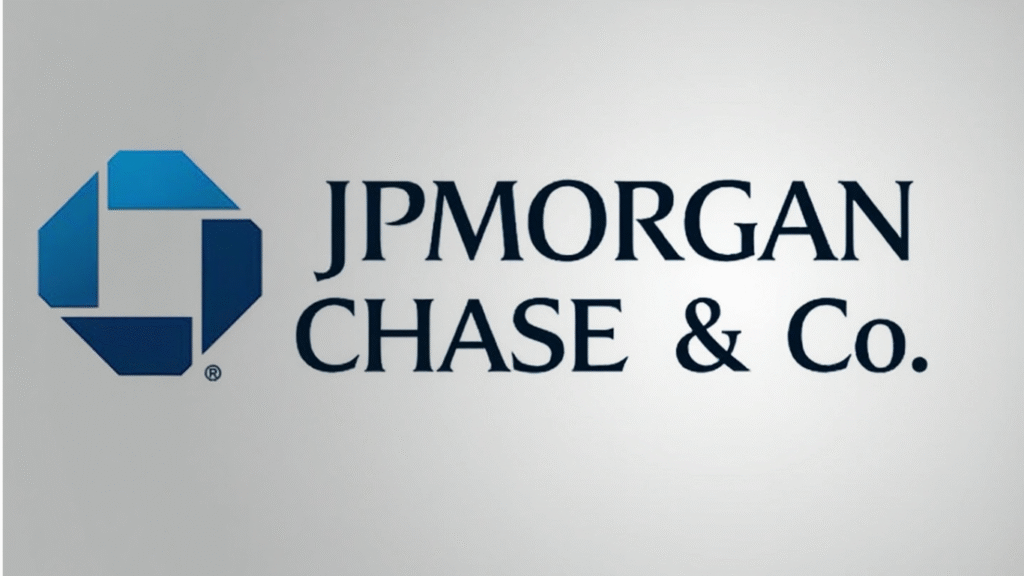
Why Buy JPMorgan in 2025 for Long-Term Growth
JPMorgan Chase is the largest and most profitable bank in the U.S., with operations spanning consumer banking, commercial banking, investment banking, and asset management. Led by CEO Jamie Dimon, the bank has consistently outperformed peers in both stable and volatile environments.
In 2025, JPMorgan stands out as a beneficiary of higher interest rates, which expand net interest margins and boost earnings. The bank is also at the forefront of digital transformation in financial services, with massive investments in fintech, AI-driven risk management, and customer experience tools.
Its fortress balance sheet, diversified income streams, and prudent risk management make JPM a cornerstone for long-term investors seeking stability, income, and steady growth.
Fundamentals & Financial Highlights
- Revenue Growth (5-Year CAGR): ~6%
- Return on Equity (ROE): ~15%
- EPS (Earnings Per Share): Strong and consistent
- P/E Ratio (2025): ~12x (undervalued relative to growth)
- Dividend Payout Ratio: ~30%
JPMorgan’s strong financial foundation and efficient operations allow it to deliver solid returns even in times of economic uncertainty, making it a defensive and growth-friendly holding.
Dividend & Shareholder Value
- Dividend Yield: ~2.4%
- Dividend Growth: Increased consistently over the past decade
- Share Buybacks: Ongoing buybacks enhance shareholder value
JPM offers one of the most reliable dividends in the financial sector, making it attractive for income investors. With a modest payout ratio, there’s room for continued growth.
Long-Term Catalysts (2025 and Beyond)
- Rising Interest Rates: Expands profit margins in lending businesses
- Fintech and AI Integration: Digital transformation boosts efficiency
- Wealth Management Growth: High-margin business segment expanding
- Global Expansion: Strategic growth in emerging and developed markets
- Acquisitions and Consolidation: Strengthening competitive position
Risks to Watch
- Regulatory Pressures: Capital requirements, stress tests, and compliance
- Credit Risk: Exposure to defaults during economic downturns
- Geopolitical Tensions: Affects investment banking and international operations
- Competition: From both traditional banks and fintech disruptors
Investor Takeaway
JPMorgan Chase offers a rare combination of stability, income, and long-term upside. As the U.S. banking leader, it is well-positioned to thrive in a higher-rate, tech-driven future. For investors looking for a dependable blue-chip stock with a growing dividend, JPM is one of the best long-term financial investments to consider in 2025.
9. ASML Holding N.V. (ASML)
Sector: Semiconductors / Equipment
Market Cap: Over $450 billion (as of mid-2025)

Why Buy ASML in 2025 for Long-Term Growth
ASML is the undisputed leader in semiconductor manufacturing equipment, and the sole producer of Extreme Ultraviolet (EUV) lithography machines the cutting-edge technology required to make advanced microchips. This makes ASML a critical supplier to the world’s top chipmakers, including Nvidia, TSMC, Samsung, and Intel.
As global demand for faster, smaller, and more powerful chips accelerates driven by AI, cloud computing, autonomous vehicles, and 5GASML’s machines are essential. EUV systems can cost upwards of $200 million each, and customers often wait in line for years. That’s how strong ASML’s moat is.
Governments are also prioritizing semiconductor independence, and ASML plays a central role in this global chip race, giving the company political, economic, and strategic importance.
Fundamentals & Financial Highlights
- Revenue Growth (5-Year CAGR): ~18%
- Gross Margin: ~52% (extremely high for capital equipment)
- EPS (Earnings Per Share): Robust and growing steadily
- Order Backlog: Record-high demand from global chip foundries
- P/E Ratio (2025): ~35x (reflects dominance in a high-demand sector)
ASML’s pricing power, technological lead, and strong balance sheet make it one of the most resilient and profitable companies in the semiconductor value chain.
Dividend & Shareholder Value
- Dividend Yield: ~1.0%
- Dividend Growth: Regular annual increases
- Share Buybacks: Ongoing buyback program supports shareholder returns
While ASML isn’t a high-yield stock, its consistent dividend growth and buyback program offer long-term value for shareholders seeking income and capital appreciation.
Long-Term Catalysts (2025 and Beyond)
- AI Chip Demand: Drives higher wafer complexity, requiring EUV
- Global Semiconductor Expansion: New fabs being built worldwide
- High-NA EUV Systems: Next-gen technology with even greater precision
- Geopolitical Priority: Western countries investing in chip independence
- Monopoly-Like Advantage: No direct competition in EUV space
Risks to Watch
- Supply Chain Constraints: Long lead times and precision components
- Export Restrictions: Political risks tied to China-U.S./EU relations
- Customer Concentration: Dependent on a handful of mega-buyers
- High Capital Costs: R&D and innovation must stay ahead of demand
Investor Takeaway
ASML is arguably the most important company in the semiconductor ecosystem, enabling the very chips that power modern technology. Its technological monopoly, strong financials, and rising global demand make it one of the best long-term stocks to buy in 2025. For investors seeking exposure to the future of computing and global digitization, ASML offers rare strategic value.
10. Prologis Inc. (PLD)
Sector: Real Estate (REIT)
Market Cap: Over $100 billion (as of mid-2025)
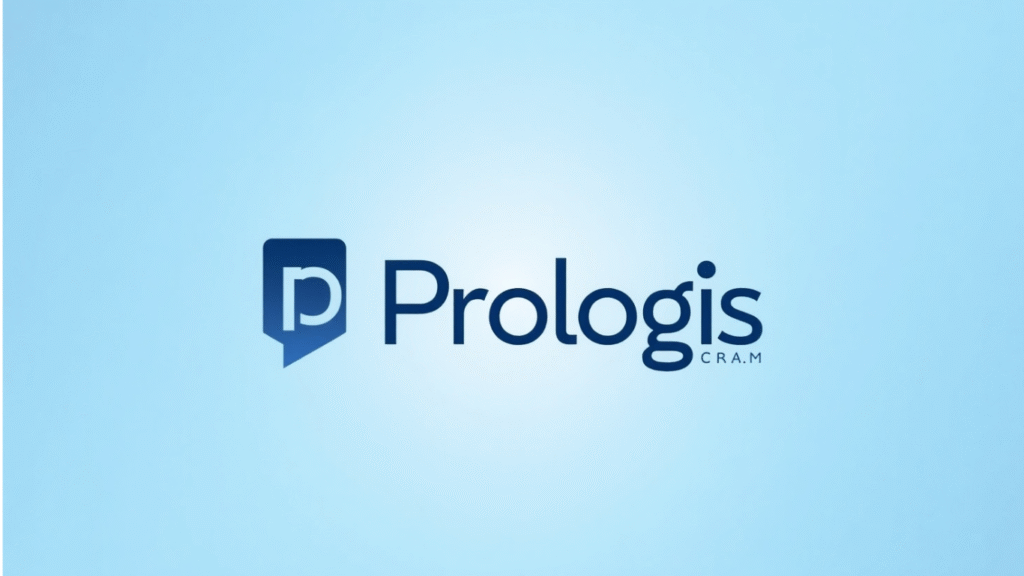
Why Buy Prologis in 2025 for Long-Term Growth
Prologis is the world’s largest industrial REIT, owning and operating high-quality logistics and distribution centers across key global markets. Its properties serve as critical infrastructure for the e-commerce economy, providing warehousing and last-mile delivery hubs for companies like Amazon, FedEx, and UPS.
As online retail continues to expand, so does the need for efficient, tech-enabled warehousing. Prologis’ strategically located properties near major cities, ports, and highways give it a long-term competitive advantage in logistics real estate.
In 2025, Prologis also benefits from rising replacement costs and limited land availability, which support rental growth and strong tenant retention. It provides a hedge against inflation and economic volatility, thanks to long-term leases, real asset backing, and consistent cash flows.
Fundamentals & Financial Highlights
- Revenue Growth (5-Year CAGR): ~9%
- Funds From Operations (FFO): Steady year-over-year increases
- Dividend Payout Ratio: ~65% of FFO (healthy for a REIT)
- Occupancy Rate: ~97% across global portfolio
- Balance Sheet: Investment-grade credit rating and low leverage
Prologis’ ability to raise rents, develop new assets, and operate efficiently positions it for continued income growth and resilience even in higher rate environments.
Dividend & Shareholder Value
- Dividend Yield: ~2.5%
- Dividend Growth: Raised annually for more than a decade
- Total Return Focus: Strong capital appreciation plus income
As a high-quality REIT, Prologis offers one of the most reliable dividends in the real estate sector, backed by growing rental income and rising asset values.
Long-Term Catalysts (2025 and Beyond)
- E-commerce Growth: Continues to drive warehousing demand
- Supply Chain Reconfiguration: More companies reshoring inventory
- Urban Logistics: High demand for last-mile delivery hubs
- Real Asset Hedge: Performs well in inflationary environments
- Technology Integration: Smart warehouses improve tenant value
Risks to Watch
- Interest Rate Sensitivity: Higher rates can impact REIT valuations
- Tenant Concentration: Exposure to large e-commerce tenants
- Development Risks: Cost overruns or regulatory delays in new builds
- Economic Slowdowns: Can temporarily reduce leasing activity
Investor Takeaway
Prologis is a top-tier REIT that offers both income and growth, backed by hard assets in a future-proof sector. With the ongoing expansion of e-commerce and the increasing complexity of global supply chains, Prologis is well-positioned to deliver steady returns for long-term investors. It’s a smart way to gain exposure to logistics infrastructure and hedge against market volatility in 2025 and beyond.
Conclusion:
Choosing the top 10 best stocks to buy now for long-term in 2025 isn’t just about chasing short-term gains it’s about building a resilient, diversified portfolio that can weather market cycles and capitalize on future trends.
From tech giants like Microsoft, Nvidia, and Alphabet, to healthcare innovators like Eli Lilly, and infrastructure leaders like Prologis, each stock on this list offers a unique blend of growth potential, financial strength, and long-term relevance.
Whether you’re investing in the AI revolution, the green energy transition, the digital banking transformation, or the resilience of blue-chip value stocks, these companies are strategically positioned to deliver sustainable returns well beyond 2025. see


